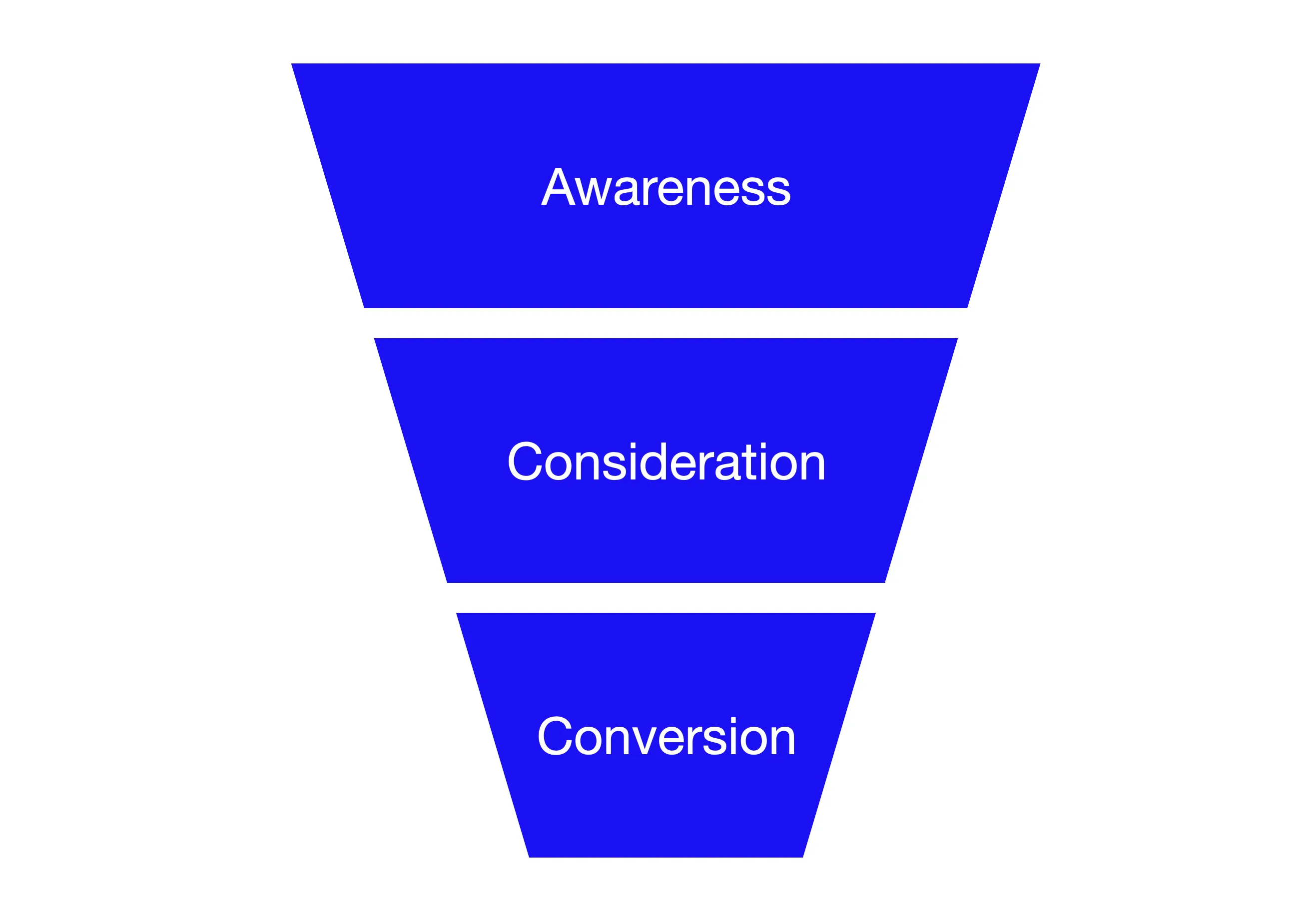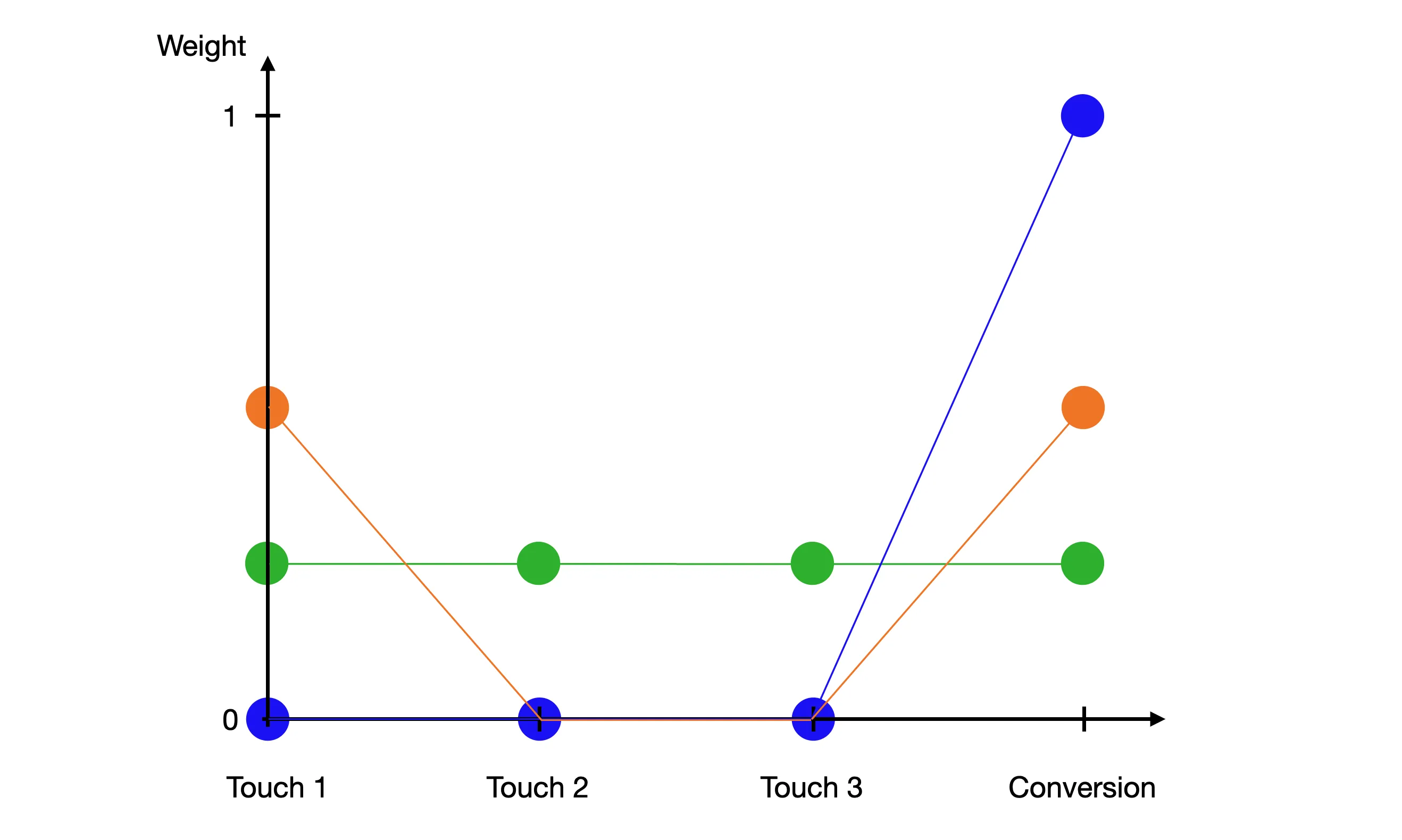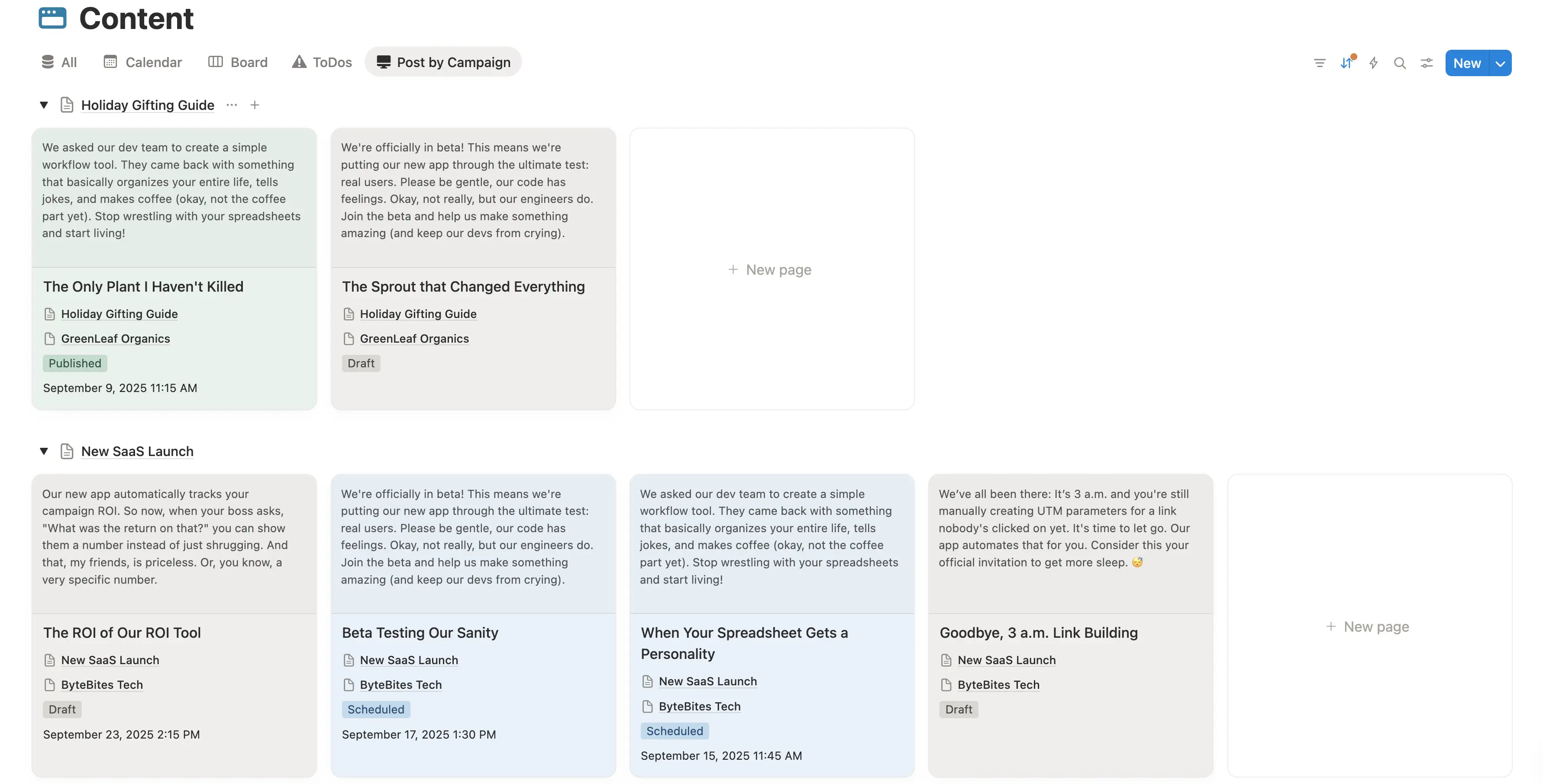Introduction
Marketing is a crucial part of any business, but too often it gets treated as a cost center rather than a driver of revenue growth. This creates a big opportunity for agencies that can clearly quantify the impact of their work, for example by showing how a campaign directly boosted sales of a specific product. Currently, few agencies can do this well. According to Marketingweek, only about 22% of marketers feel confident they can prove the ROI of their marketing activities, and lack of measurable impact is one of the most common reasons agencies lose clients. From conversations I’ve had with people in the field, it’s clear that being able to quantify their valuable work is very useful to stand out against the competition.
When it comes to organic social media, the challenge becomes obvious. Most of the conversation revolves around what is know as vanity metrics like likes, shares, and comments. These metrics might feel encouraging, but they don’t translate into revenue. To connect organic social to real business outcomes like product sales, we need to go deeper and define ROI in a way that actually reflects business impact.
In this post we are building a system for that. We’ll start by defining ROI and looking at where organic social fits into the sales funnel. Then we’ll dig into the problem of attribution, since a buyer’s journey is rarely straightforward. Finally, we’ll walk through a practical system with tools you can use today to start measuring the ROI of organic social from Notion without adding unnecessary complexity.
What is ROI and Why Does It Matter for Social Media?
Return on investment, or ROI, is one of the most important measures in business because it shows whether the effort you put in actually pays off. At its simplest, ROI is calculated as net profit divided by the total cost of the investment, multiplied by 100 to give a percentage. In other words, it answers the question: for every dollar spent, how many dollars came back in return.
In the context of social media, clients invest resources into campaigns and content, and agencies execute those campaigns. Measuring ROI helps both sides understand which efforts are generating revenue and which are not. It allows clients to see the impact of their investment, and agencies to demonstrate their value and optimize strategy.
A data-driven approach makes this possible. By tracking ROI, we can identify which strategies generate the most value, refine campaigns based on evidence, and make the business case for ongoing or increased investment. Most importantly, both clients and agencies gain confidence that the money spent on social media is driving meaningful business results.
Organic Social Media in the Sales Funnel
To understand how organic social media impacts a business's bottom line, we need to look at the classic sales funnel. This funnel is a simple model that describes a customer’s journey from first hearing about a brand to becoming a loyal customer. The stages are Awareness, Consideration, and Conversion

Figure 1: A visual representation of the sales funnel with the three stages: Awareness, Consideration, and Conversion.
Organic social content plays a key role in the top and middle of this funnel. At the Awareness stage, posts, videos, and other content introduce potential customers to the brand and its products. As people engage with this content, they move into the Consideration stage, where they might follow the company’s page, read blog posts, or watch product demos to learn more. While organic social can sometimes drive a direct Conversion or sale, its main purpose is to build the trust and interest that leads to a sale later on. Because of this, trying to directly tie a single social post to a sale becomes a real challenge. This is where the problem of attribution comes in.
The Attribution Problem: Connecting Social to Sales
One of the biggest challenges in measuring ROI for organic social is attribution. As mentioned before, a customer’s path to purchase is rarely straightforward. Someone might see a post on Instagram, click a link, leave your site, later Google your brand, read a review, and finally buy. Which of those touchpoints deserves the credit? Without a good model, it’s impossible to show the real impact of that first social interaction.
The simplest way to approach this is called last-touch attribution, see figure 2 in blue. In this model, the final action before the conversion gets 100% of the credit. If someone clicks a paid ad and then buys, that ad gets all the recognition, even if a social post introduced them to your brand in the first place. The strength of this model is its simplicity, but it ignores the value of earlier touchpoints entirely.
Another option is linear attribution, in green in figure 2. Here, every touchpoint in the journey gets equal credit. If a customer engaged with a social post, opened an email, and clicked an ad before converting, each of those touchpoints would be assigned one-third of the credit. This avoids overlooking earlier steps, but it still oversimplifies the journey because it assumes all interactions matter equally.

Figure 2: Different attribution models to emphasize different touch points along the path of a user until conversion on the right. The last-touch model in blue puts all emphasis on the conversion, while the linear attribution model weights all touch points equally as shown in green.
More advanced models, like time decay (which gives more weight to interactions closer to the conversion) or U-shaped (which emphasizes both the first and last touchpoints, see an extreme example in orange in figure 2), try to better capture the complexity of real customer journeys. These approaches are more realistic than simple models, but at the end of the day they are still rule-based and rely on assumptions about which steps are most important.
The Practical Toolkit: UTM Tracking Parameters
Before we can measure ROI or build any kind of attribution model, we need a way to track where our traffic is coming from to then see where it is going on our website. That is exactly what UTM parameters (Urchin Tracking Module, see here for example for more info) do. A UTM is a small tag we attach to the end of a link that tells our analytics tools the source of a visit. The most common ones are utm_source, utm_medium, and utm_campaign. Together, they answer the question: did a visitor arrive from LinkedIn, from our newsletter, or from somewhere else.
This matters because without UTMs, all of our traffic looks the same. We might see that our website had 1,000 visitors this week, but we would not know if those visitors arrived through a social post, an email, or a referral. UTMs break that down and give us visibility into which channels and campaigns are actually driving results. They form the foundation for measuring ROI.
Take a simple example. Suppose we are promoting a new product on LinkedIn. Instead of just linking to our site, we could share a link like this:
https://ourwebsite.com/product?utm_source=linkedin&utm_medium=social&utm_campaign=fall_launch
Here, utm_source=linkedin tells us the traffic came from LinkedIn, utm_medium=social shows it was organic social, and utm_campaign=fall_launch ties it back to the specific campaign. When visitors arrive through this link, we can clearly see which post and which campaign brought them in.
The challenge is that UTMs are tedious to manage by hand. If we are running a content calendar with dozens of posts, adding the right tags to every link takes time and creates plenty of room for mistakes. A small typo or inconsistency can break our tracking, and over time the data becomes unreliable. This manual pain is exactly what sets up the need for a better solution.
Solving the Attribution Problem with a Better Machine Learning Model
In the previous section we saw how UTMs give us the ability to track the source of our traffic. They tell us whether a visitor arrived from LinkedIn, from an email, or from another channel. This data is powerful, but by itself it still leaves us with the question of how much credit each interaction deserves in the overall customer journey.
Earlier we looked at simple attribution models like last-touch and linear. These approaches are easy to understand but they rely on rules that do not reflect the way people actually move through the funnel. If we stop here, we risk drawing the wrong conclusions and undervaluing the role of organic social.
A more reliable approach is to combine our UTM data with information about what visitors do once they land on our site. For example, we might see that someone came in through a LinkedIn campaign, read two blog posts, and then later returned to buy after clicking an email. By looking at thousands of these journeys together, we begin to see patterns in how different touchpoints work together to drive conversions.
This is where machine learning adds value. Instead of applying a fixed rule, a model can learn from those patterns and assign credit in a way that reflects actual behavior rather than assumptions.
The result is a clearer and more accurate picture of ROI. Our organic social posts that create awareness or build trust during the consideration stage can finally be recognized for their impact, even if they are not the final step before purchase. With machine learning, attribution becomes evidence-based and allows us to show the real business value of our social activity.
A Content Calendar System for ROI Tracking
To make all of this practical, we need a simple system that keeps everything in one place. For this, we have created a free Notion template that acts as both a content calendar and a central database for our UTM tracking. It gives us a structured way to plan posts, assign campaigns, and record the metrics that matter.

Figure 3: Notion content calendar template showing posts organized by campaign and scheduled dates.
The template works much like any other content calendar, see figure 3. We can plan out upcoming posts, attach them to a specific campaign, and manually log key metrics such as likes, shares, and comments once the posts go live. What makes it different is that it also serves as the database for our UTM data as you can see in figure 4. Every post we add to the calendar has its corresponding UTM parameters and full tracking URL stored alongside it, so we always know exactly how to track the traffic it generates.
Figure 4: Table view of the Notion template with the tracking URL for each post. We can create it manually in the template or use the integration with the BroadPost app to automatically create these links for each post based on the campaign and selected source. Then for each relevant link inside of the post the tracking parameters are added automatically so you don't have to worry about them at all.
This setup turns Notion into a lightweight but powerful hub for ROI tracking. It keeps our campaigns organized, reduces the chance of errors, and ensures that every link we share is properly tagged and ready to feed into our attribution model.
From Manual Tracking to Automated Insight with BroadPost
While our Notion system makes ROI tracking structured and manageable, it still comes with clear pain points. Creating UTM links for every post is repetitive and easy to get wrong. Logging vanity metrics by hand takes time, and even with good habits, mistakes can slip in. This manual work slows everyone down and distracts from the creative side of social media.
That is why we are building BroadPost. It is the automation layer that removes the most tedious tasks and provides a shared system for both clients and agencies. Agencies can continue to work directly in Notion, just as they do now, or use BroadPost’s own interface. Either way, the app automatically generates the correct UTM parameters for every post and pulls engagement metrics from the social platforms straight into the system.
Additonally, BroadPost uses custom machine learning models for each client, learning from their unique customer journeys to better model attribution. Instead of relying on the rigid rules of last-touch or linear attribution, the model assigns credit based on actual behavior. This gives clients a transparent, defensible view of ROI, while agencies get clear insight into what content performs well and why.
This setup changes the dynamic in a positive way. Because the client owns the system, they can bring in multiple agencies or freelancers and compare results side by side. Smaller or niche agencies gain more opportunities to compete, while clients benefit from a broader pool of creative ideas at a lower cost. Agencies win too, as they can focus on creativity and strategy without being bogged down by data management or reporting tasks. BroadPost becomes the shared foundation where data lives and performance is measured, creating growth on both sides.
We are currently validating BroadPost and looking for early collaborators. If you want to help shape this tool, feel free to reach out to provide input or become a pilot client.
Conclusion
Measuring the ROI of organic social media has always been a challenge. Rule-based attribution models fall short, manual UTM tracking is error-prone, and agencies often spend more time proving their value than creating it. By combining a structured system with automation and smarter attribution, we can finally bridge the gap between social activity and business outcomes.
BroadPost is our step toward that future. It gives clients transparency, empowers agencies to focus on creativity, and creates a shared foundation where data and strategy come together. With the right tools, organic social can stop being a nice to have and become a measurable driver of growth.

